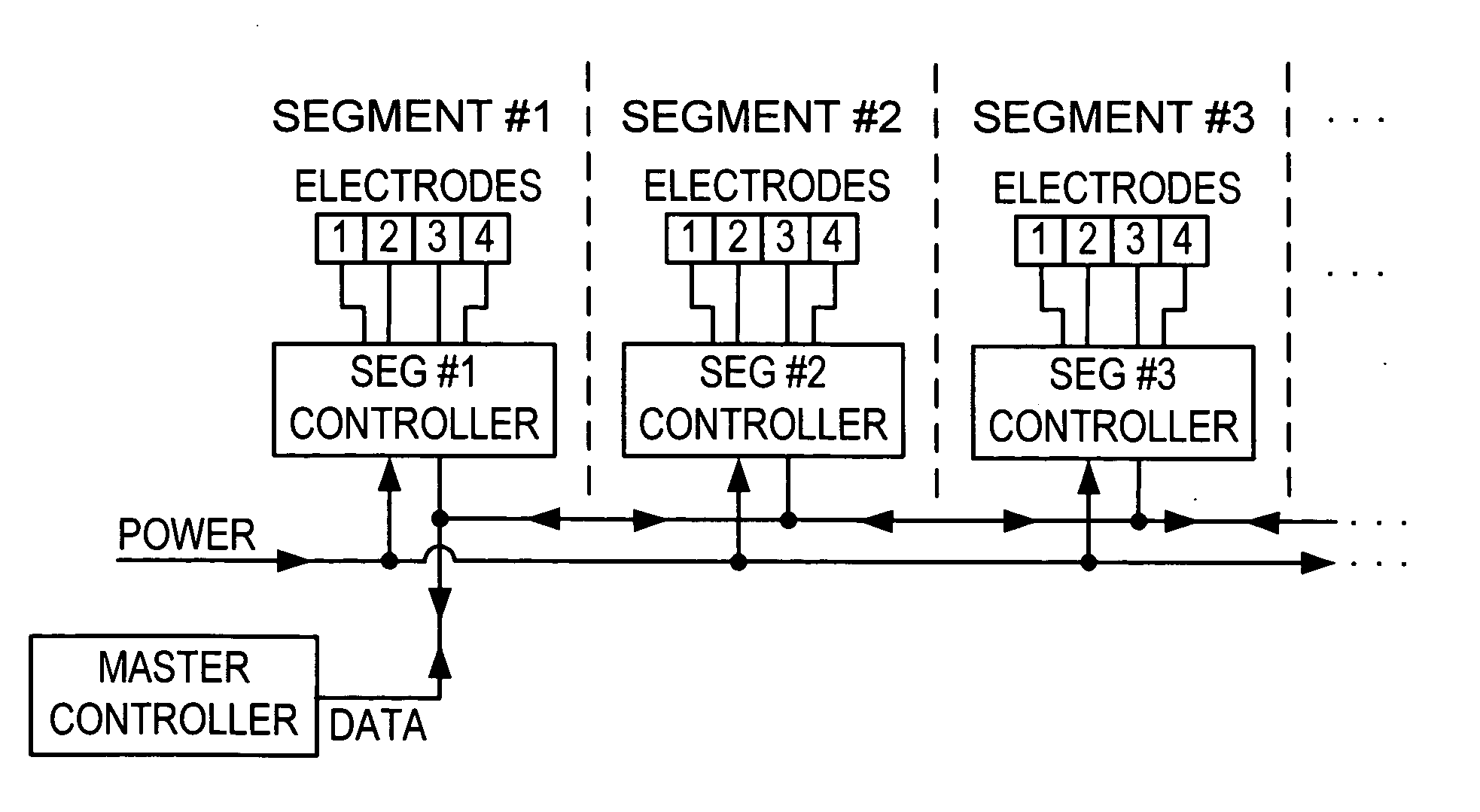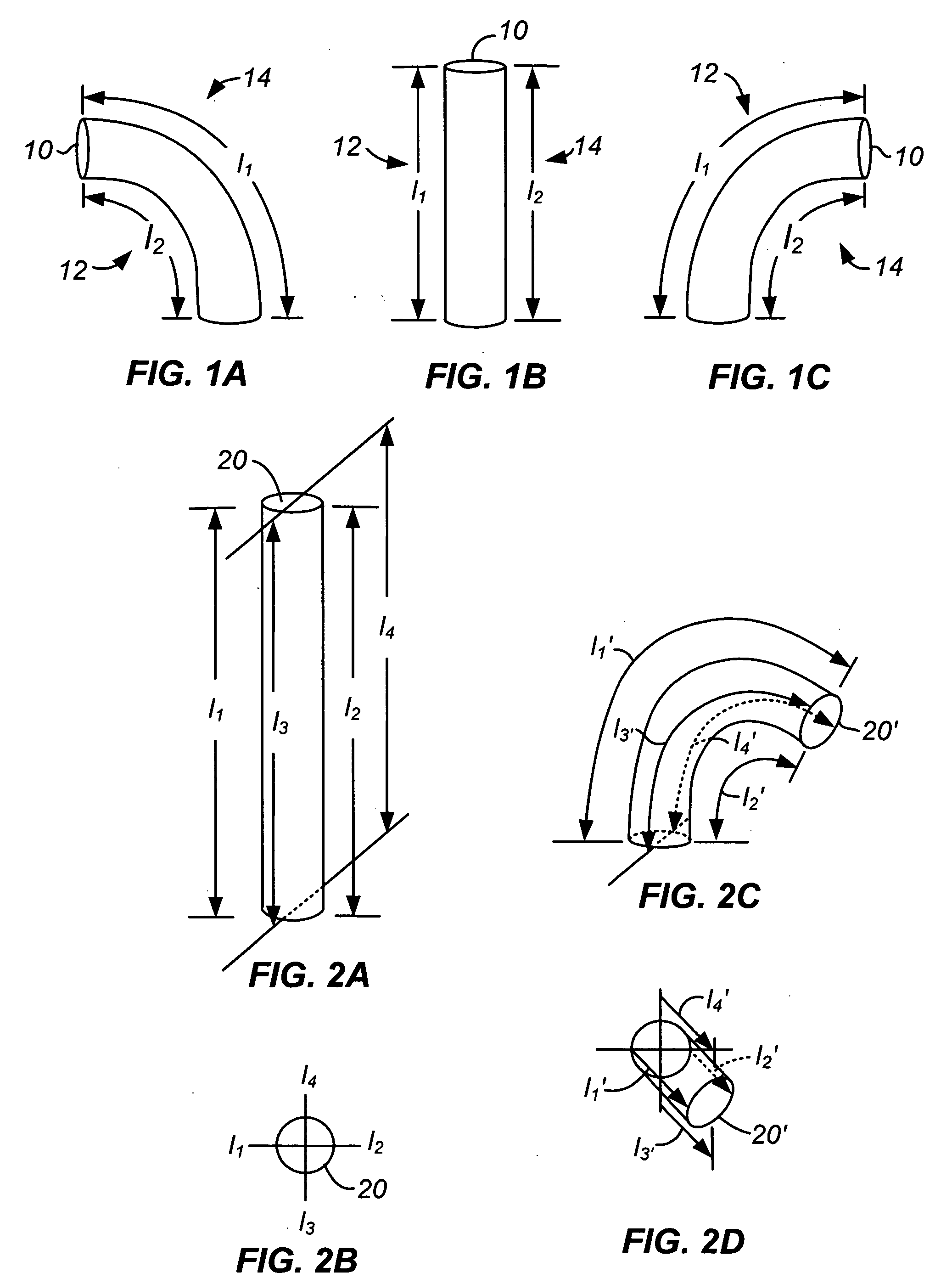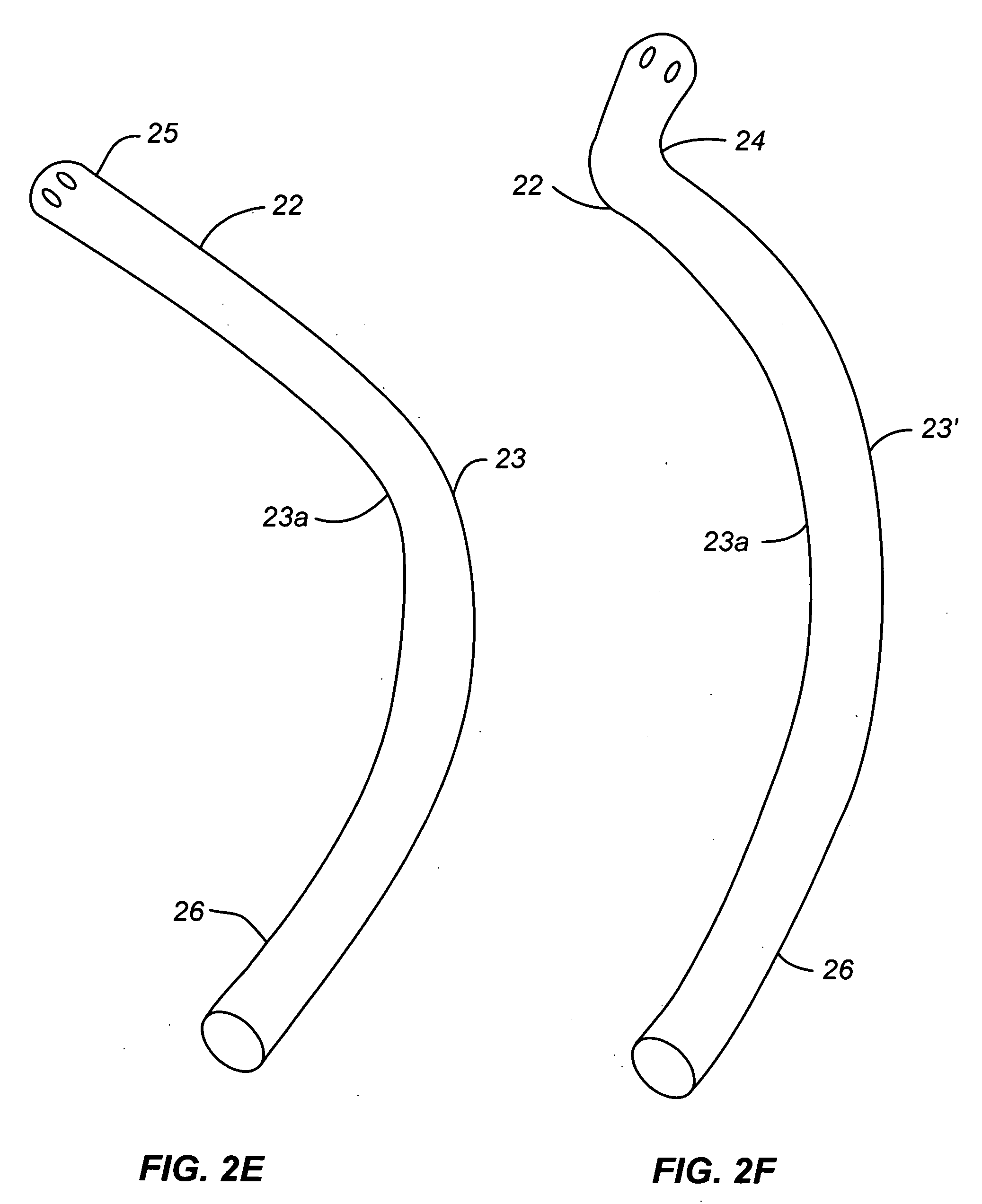Activated polymer articulated instruments and methods of insertion
a polymer and active technology, applied in the field of articulating instruments, can solve the problems of increasing the complexity of articulating endoscopes and articulating surgical instruments generally, complicated insertion of colonoscopes, and time-consuming,
- Summary
- Abstract
- Description
- Claims
- Application Information
AI Technical Summary
Benefits of technology
Problems solved by technology
Method used
Image
Examples
Embodiment Construction
[0076] A variety of electromechanical actuators based on the principal that certain types of polymers can change shape under certain conditions of stimulation have been under investigation for decades. During the 1990's, widespread international research was performed, numerous papers were published and several conferences held regarding activated polymer actuators. In January 2001, this research was organized by Yoseph Bar-Cohen in a book he edited entitled “Electroactive Polymer (EAP) Actuators as Artificial Muscles: Reality, Potential and Challenges” (SPIE Press, January 2001). As used herein, activated polymers refer generally to the families of polymers that exhibit change when subjected to an appropriate stimulus. See, for example, Bar-Cohen Topics 1, 3, and 7, Chapters 1 (pp. 1-38), 4 (pp. 89-117), 5 (pp. 123-134), 6 (pp. 139-184), 7 (pp. 193-214), 8 (223-243), and 16 (457-493) all of which are incorporated herein in their entirety.
[0077] One manner of categorizing activated...
PUM
 Login to View More
Login to View More Abstract
Description
Claims
Application Information
 Login to View More
Login to View More - R&D
- Intellectual Property
- Life Sciences
- Materials
- Tech Scout
- Unparalleled Data Quality
- Higher Quality Content
- 60% Fewer Hallucinations
Browse by: Latest US Patents, China's latest patents, Technical Efficacy Thesaurus, Application Domain, Technology Topic, Popular Technical Reports.
© 2025 PatSnap. All rights reserved.Legal|Privacy policy|Modern Slavery Act Transparency Statement|Sitemap|About US| Contact US: help@patsnap.com



